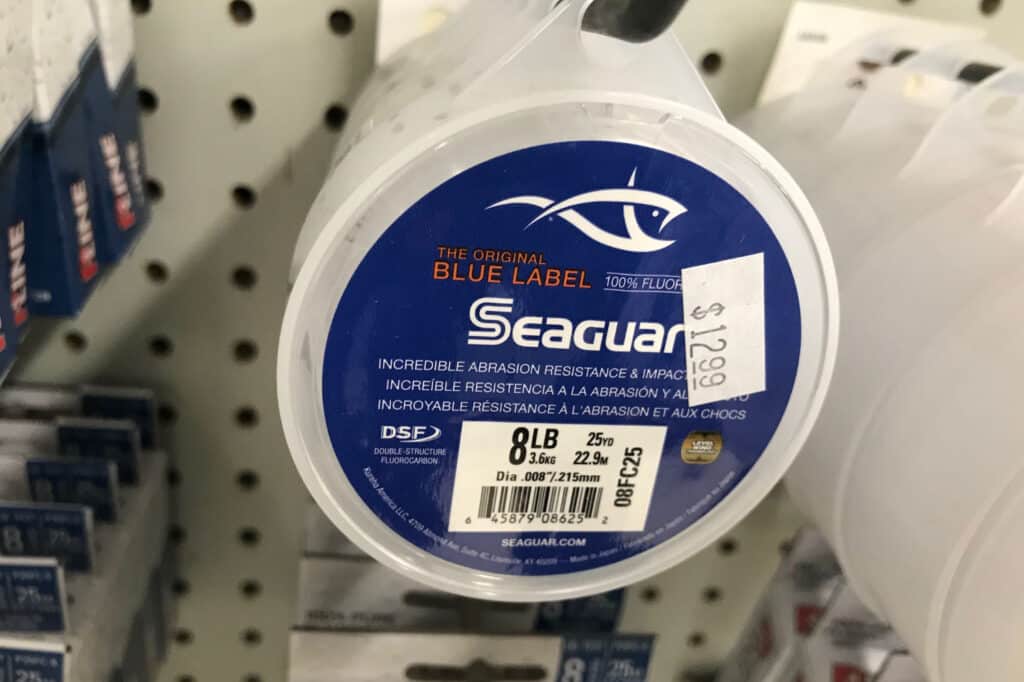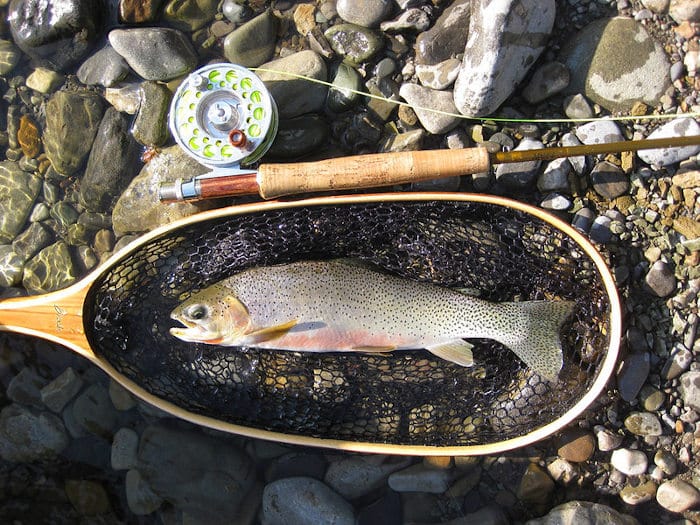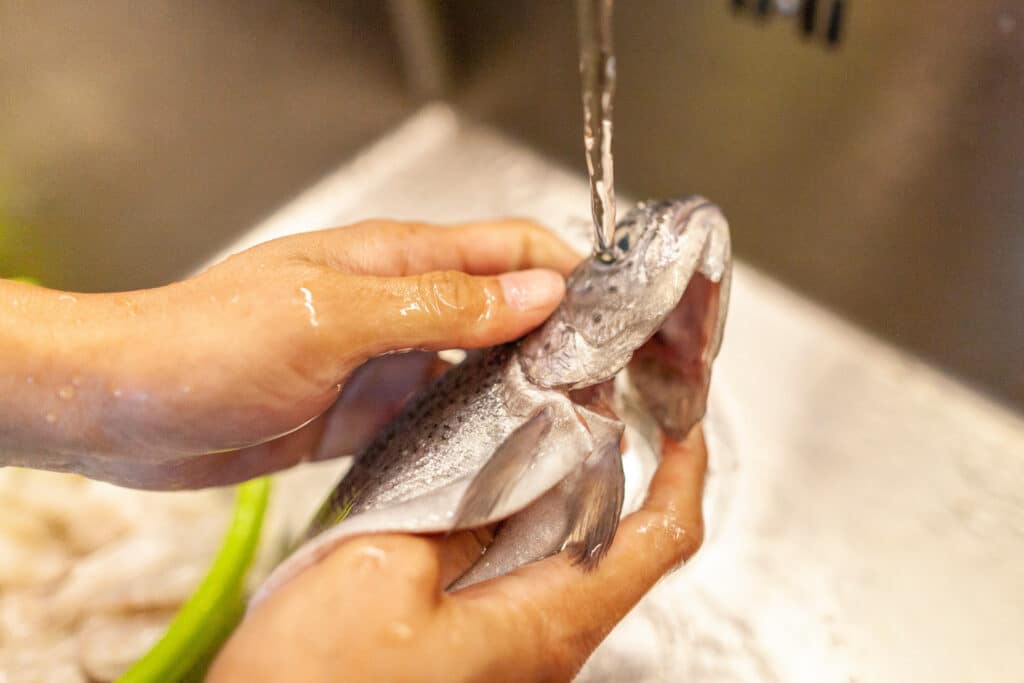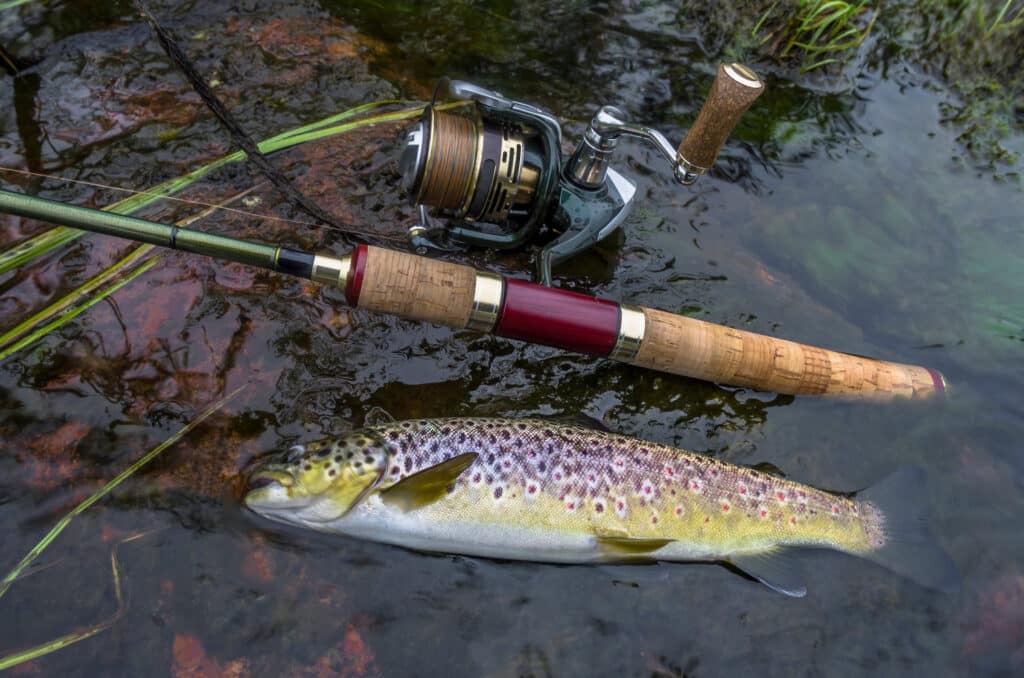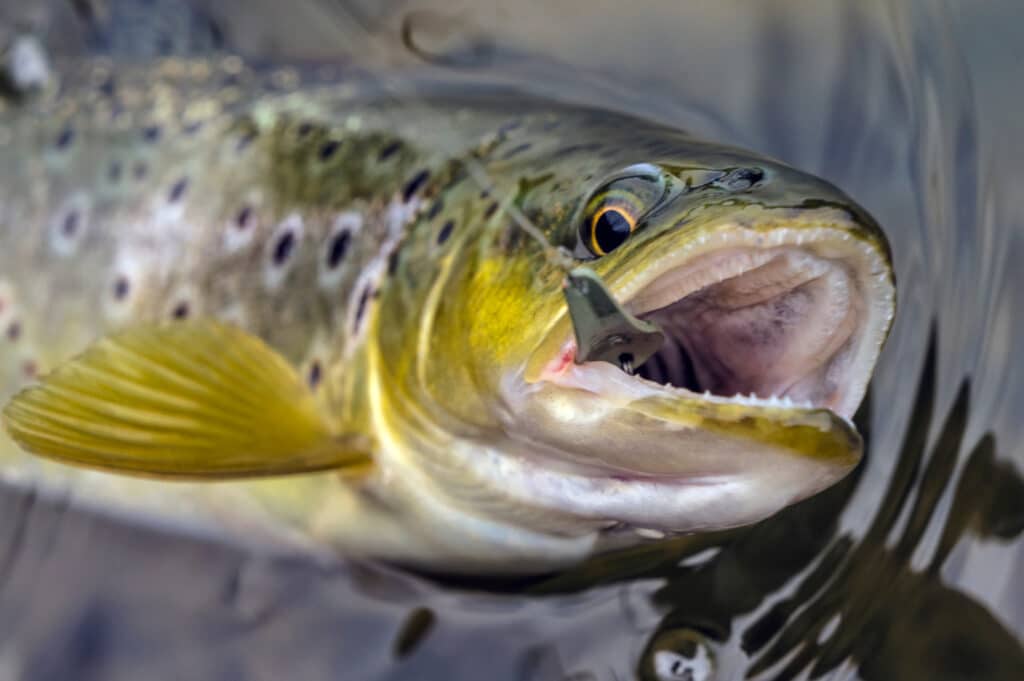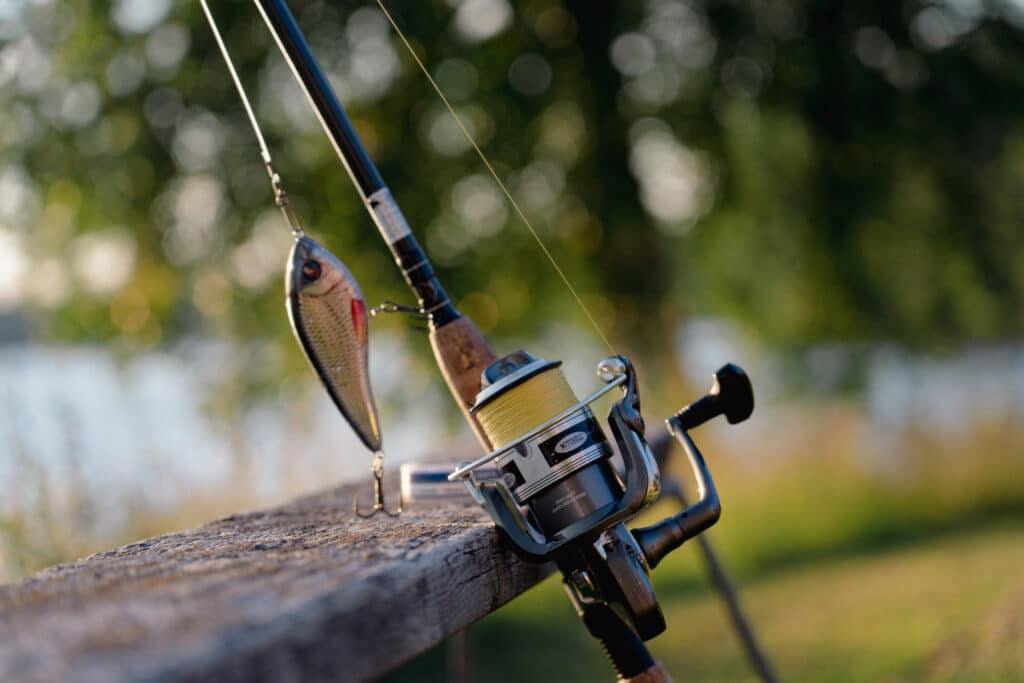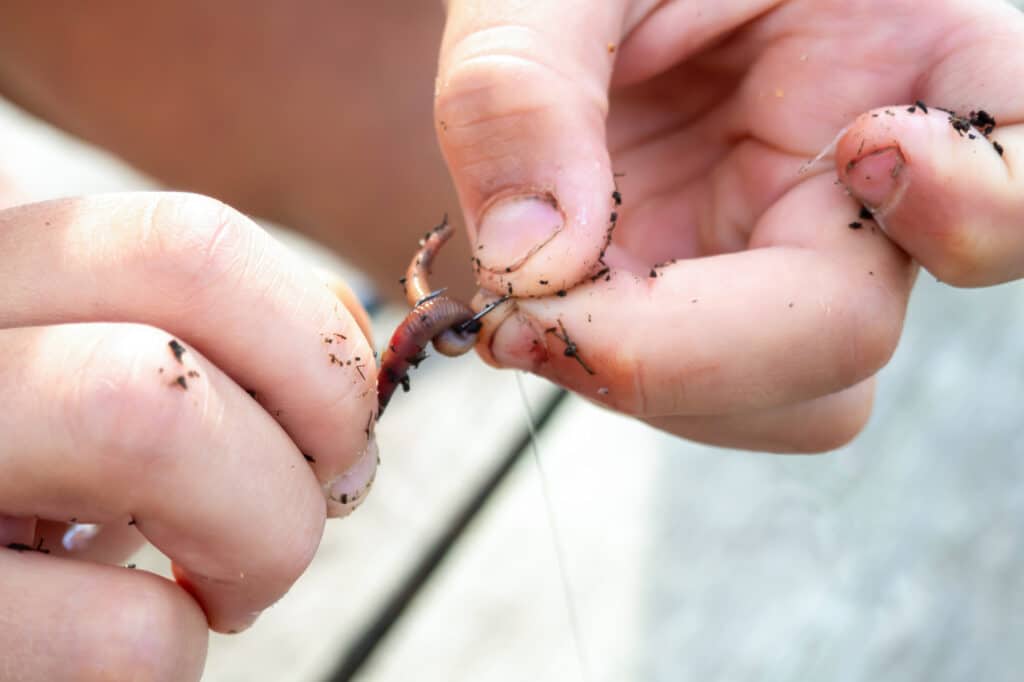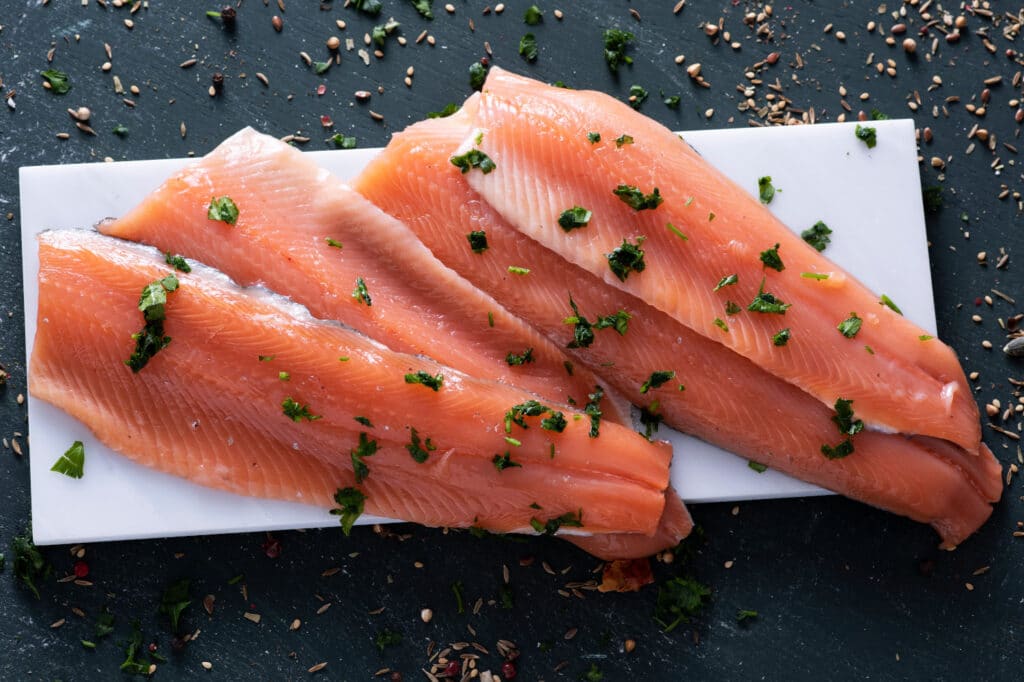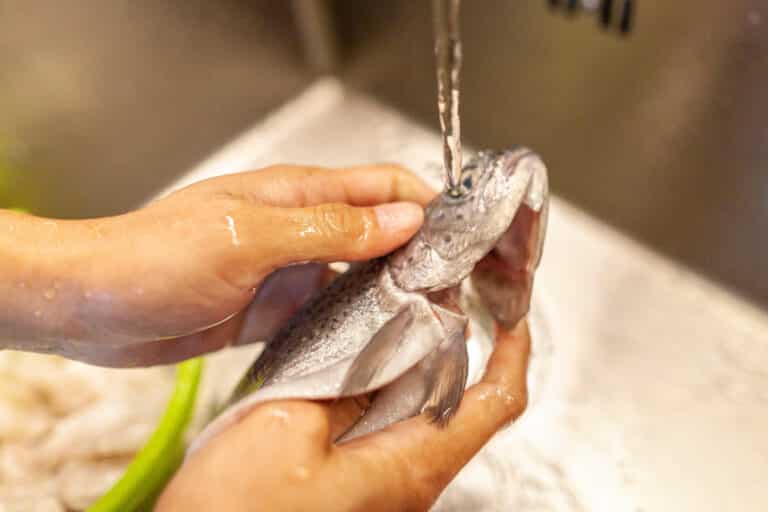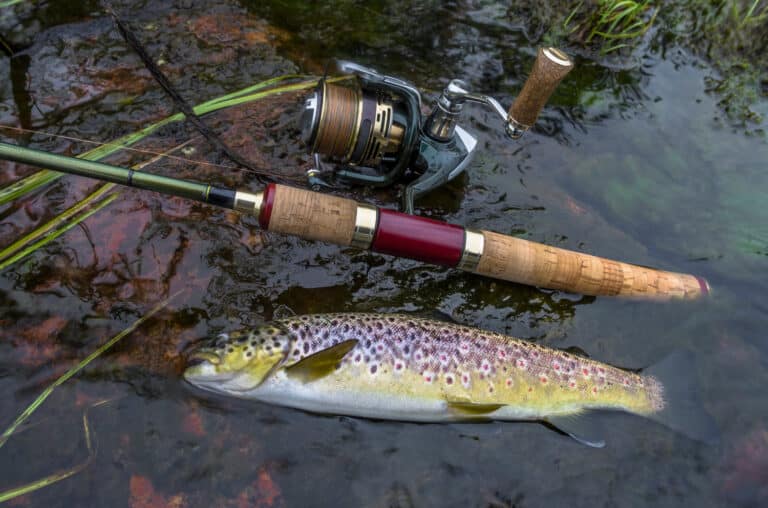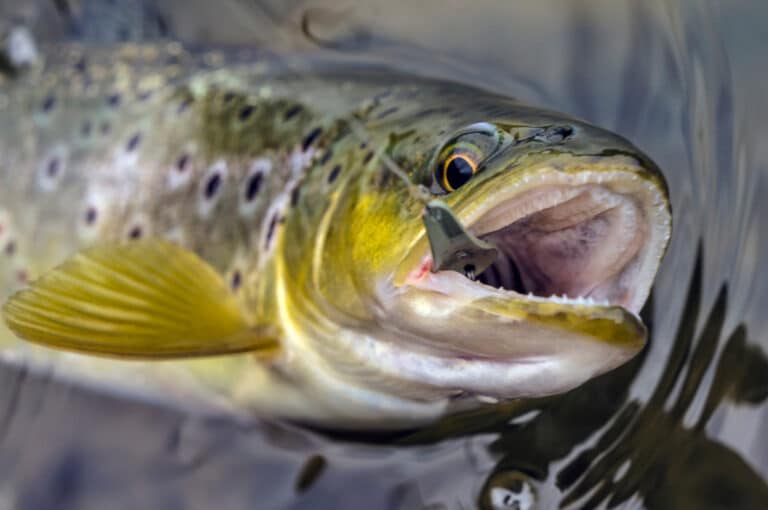Fluorocarbon line is awesome. It has extremely low visibility, high abrasion resistance, low stretch, and no water absorption. But as a line for spinning reels? It’s almost always seen as a bad idea.
This isn’t without reason. Fluorocarbon line is stiff. It tends to “jump” off the spool when you cast or open the bail, and this can result in horrible tangles. It’s also very expensive relative to monofilament, so if you get an untangle-able mess, it’ll cost you.
This has led many anglers to believe that fluoro is only good as leader material. This may have been true of older, less advanced fluorocarbon lines, but it’s not always true today. The best fluorocarbon fishing lines on the market today are far more pliable than their predecessors, and they’ve gotten better in other areas, too.
In this article, I’m going to go over some of the best fluorocarbon lines for spinning reels, as well as why you might want to use them and some fishing tips to make them easier to work with.
The Wild Provides is a participant in the Amazon Affiliate program. If you click through one of the links on this site and make a purchase, we may receive a small commission at no extra cost to you. It helps to keep us up and running, but all recommendations are my own honest opinions.
Why Fluorocarbon Fishing Line Is Good For Spinning Reels
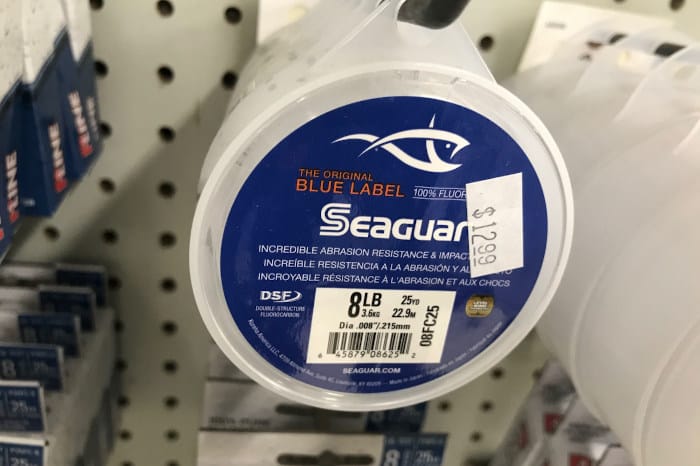
Though it can have its drawbacks, there are a ton of reasons to use fluorocarbon for spinning reels.
The first is just the advantages of fluorocarbon itself.
- It’s nearly invisible underwater.
- It’s highly abrasion-resistant, making it better for fishing heavy cover than braid or monofilament line.
- It has low stretch, resulting in better bite detection
- It has a smaller diameter for its pound test rating, so it has less drag and visibility than mono line.
Everyone can acknowledge these qualities are great. But to get around the tangling problem, many anglers use braided lines as a mainline and use fluorocarbon as a leader. This presents some huge problems of its own, though.
The Problems With Braided Mainline And Fluorocarbon Leaders
Many people I know like to use braided main line with a fluorocarbon leader, and if done properly that can work great. But there are some major drawbacks to it as well, which may sway you towards using straight fluoro on your spinning reels.
#1: Increased Risk Of Knot Failure
You need at least one extra knot to tie a leader to braid, and if you hook a big fish, that knot is one more point that can fail. I’ve had it happen to me more than once, and it’s not fun.
Braid to mono/fluoro knots are also tricky to get right, and unless you use the right knots and tie them perfectly, your whole setup could be severely weakened by that one knot.
#2: Waste Of Time
It may seem like an insignificant amount of time, but more time tying means less time fishing. And this is especially true when you end up switching out lures often, because as your leader length shortens you’ll need to tie on another one. When it’s windy out or conditions are less than ideal, tying on another leader is a pain.
#3: Leader Shortening
Since retying leaders on the water can be annoying, we all tend to put it off even when our leader is too short. This results in higher line visibility underwater, and a higher risk of abrasion in cover, especially when using braid as mainline. The result is that the braid-to-fluoro combo is usually less effective than it could be.
#4: Less Forgiving
Fluorocarbon really excels with finicky fish that require a stiller presentation. Because of braids’ extreme sensitivity, it’s easy to overwork baits, and you can miss fish that would have bit just because slight movements of your rod in your hand produced movements in the bait that the fish didn’t like. Fluorocarbon is more forgiving than braid, so it allows for less movement while still making for good hooksets.
These are pros and cons that every angler has to weigh out for themselves, and many will certainly still prefer braid-to-fluoro. But with all the great fluorocarbon lines on the market, its drawbacks are less significant than they used to be, and it can be great for spooling on spinning reels too.
The Best Fluorocarbon Fishing Line For Spinning Reels
Here are the best fluorocarbon fishing lines for spinning reels that do a great job of minimizing drawbacks, right now in 2022.
Best All Around: Seaguar Tatsu
Seaguar TATSU is the ultra-premium fishing line option for when money is no object. It’s more expensive than any other line on this list, but there isn’t another line that quite matches it.
It’s a “double structure” fluorocarbon (exclusive to Seaguar, as far as I can tell), that combines a pliable, yet abrasion-resistant exterior with a strong, sensitive interior. This increases its strength without sacrificing usability. It still has very high knot strength, it’s easy to tie, and it casts as smooth as regular monofilament.
If money is no object, this is THE fluoro line to go with for its winning combo of high strength, abrasion resistance, and castability.
Best For Low Visibility: Seaguar InvizX
This is the line to beat for clear water applications. It’s designed with low visibility in mind, and its small line diameter only helps that more.
I wouldn’t be recommending it for spinning reels if it wasn’t smooth and castable though, either. Fortunately, it’s amazingly soft, and it feels just like monofilament. It doesn’t jump in the wind, and if you didn’t already know it was fluorocarbon you would probably never guess it.
Seaguar InvizX doesn’t quite match the strength of the Tatsu, but it has a much more reasonable price tag. So if you’re looking for a premium, highly castable line that’s a little more affordable, this is the one to go with.
Best For Smooth Casting: Sunline Super FC Sniper
Sunline Super FC Sniper is designed to maximize casting distance and ease. It’s easier to cast than just about any other fluorocarbon line. Its triple resin coating results in very low memory, so if you leave it on the spool for long periods of time it won’t get those classic fluorocarbon coils. This also means it doesn’t crimp into place on lures or at your rod tip, which results in better durability and strength over time.
The drawback is that it doesn’t quite have the strength of either of the Seaguar options. If using it, it’s better to go with a slightly heavier pound test rating than you normally would (though it’ll still cast amazing and have relatively low visibility).
Best Budget: Berkley Trilene XL Fluorocarbon
For a 100% fluorocarbon line with a solid value, Berkley Trilene XL fluorocarbon is great. Trilene XL is their smooth-casting monofilament line, and the 100% fluoro version looks and feels just like the monofilament. It does tend to hold coils a little more than the mono version of Trilene XL in my experience, but it’s still very smooth for fluoro, and it’s a great value for the price.
Best Fluorocarbon Coated: KastKing Fluorokote
Kastking Fluorokote is a great budget option if you want some of the benefits of fluoro without sacrificing on price. This line is made with a copolymer core and a fluorocarbon coating, so it’s still abrasion-resistant and sensitive like 100% fluorocarbon. Despite its copolymer core, it still has high density, so if you need fluoro for its sinking ability this works for that also. It has low water absorption, too, so it behaves like fluoro in most ways (besides castability, where it excels).
What you sacrifice with this option is line visibility. It isn’t any more visible than mono line, but it is much more visible than something like Seaguar InvizX. If visibility isn’t of the utmost importance, though, this is still a great line.
Fluorocarbon Fishing Tips
1. Use Monofilament (Or Braid) As Backing
If you want the benefits of fluorocarbon line while keeping costs low, consider using monofilament or braided line as a backing to save some money.
This is different from using it as a leader, because in this case, you’ll be filling half your spool with fluoro (or however much you need to not get into the backing when you cast). That minimizes retying, maintains the sensitivity benefits, and still lets you save money over spooling your entire reel with fluoro.
For joining the two lines, try the FG knot or Alberto knot for mono-to-fluoro, or the blood knot for braid-to-fluoro.
2. Use Proper Knots And Tying Techniques
As mentioned above, the FG knot or Alberto knot are great for tying mono to fluoro. But you also need to use the correct knots when tying on lures.
The best knot for fluoro is the Trilene knot. It’s simple and easy to tie, but is plenty strong and reduces the “cutting off” effect that happens with other knots and fluoro fishing line. There are other great knots too, though; read this to learn more about what the pros use.
It’s also important to always wet your knot before cinching. This isn’t as important as it used to be, as the lines I’ve listed here are much more supple than their older counterparts. But excess friction can still reduce knot strength, so wet them and make sure you get a good fit.
3. Use Line Conditioner
Tangle-free or KVD Line and Lure Conditioner is a game-changer when it comes to fluoro. The lines I’ve listed will work fine without it, but its benefits are still noticeable and I highly recommend using it.
Line conditioner will keep your line properly lubricated. It’ll increase casting distance and manageability, and decrease spool coiling. Spray it on your reel before spooling the line and spray it on the spooled line a few hours to a day before fishing, and you’ll have a much better experience.
4. Spool Your Line Correctly
Correctly spooling your line on your spinning reel can go a long way towards reducing issues on the water. The common knowledge is to lay your new spool with the label up to reduce line twist, but this only helps the situation minimally.
The key is to make the line go onto your reel the exact same way it came off the spool. The best way to do this is with a line spooler (which you can buy for fairly cheap on Amazon), but for a DIY way that works too, check out this video.
Conclusion
Despite popular opinion, fluorocarbon line for spinning reels can work great. You’ll get all its benefits as a leader, plus some added advantages. And if you go with the lines on this list, you’ll greatly reduce its drawbacks as well. Just remember to follow best practices with it, and you’ll have a great time fishing.

